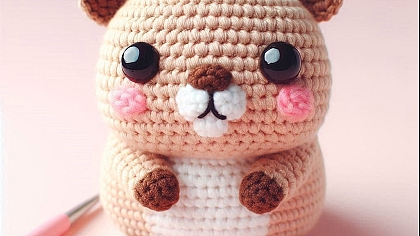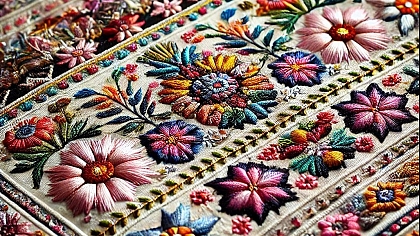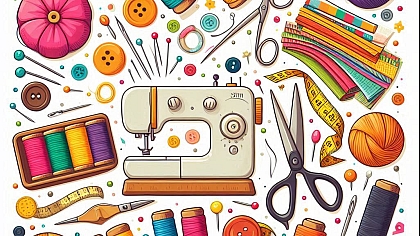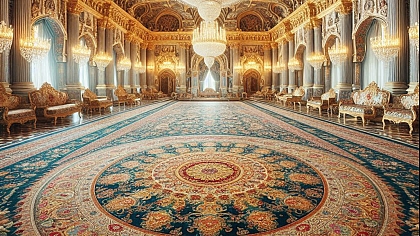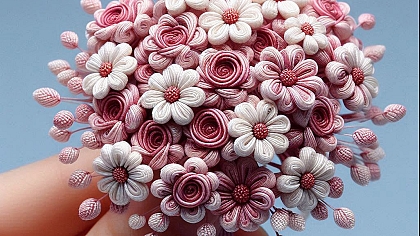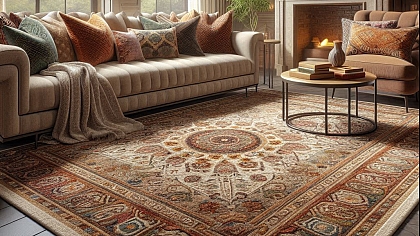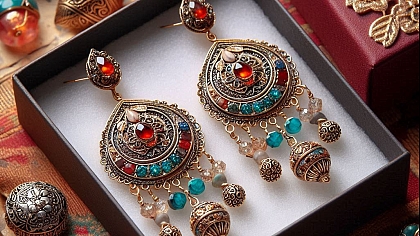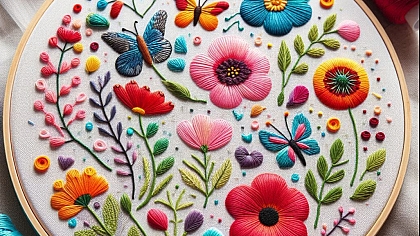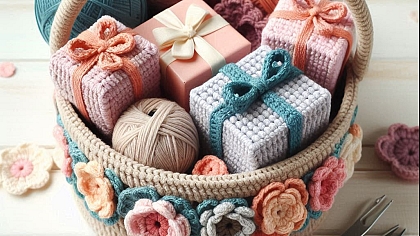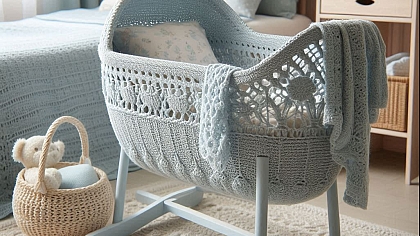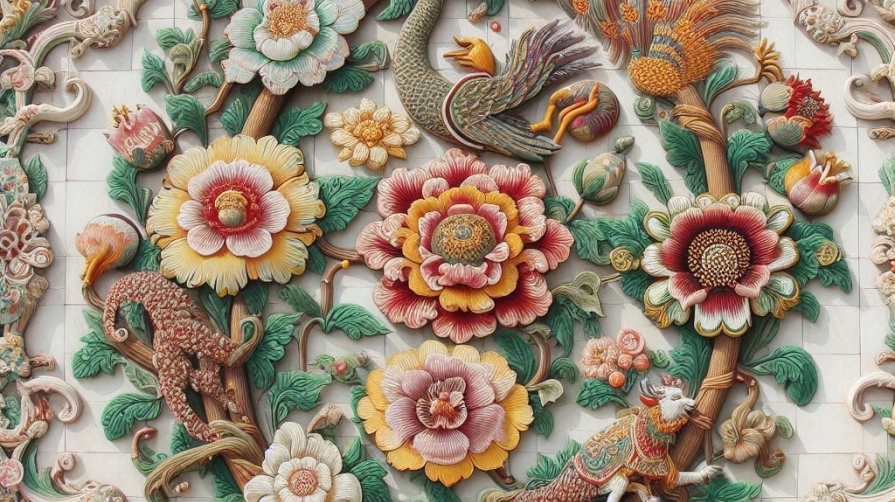
The History of Embroidery: From Ancient Times to Modern Trends
Embroidery, the art of decorating fabric with needle and thread, has woven its intricate patterns through the fabric of human history. This ancient craft has evolved over millennia, influenced by cultural, social, and technological changes, yet it remains a beloved and vibrant form of artistic expression today. This journey through time explores the origins, developments, and modern trends of embroidery, revealing how this timeless craft continues to enchant and inspire.
Ancient Beginnings: The Origins of Embroidery
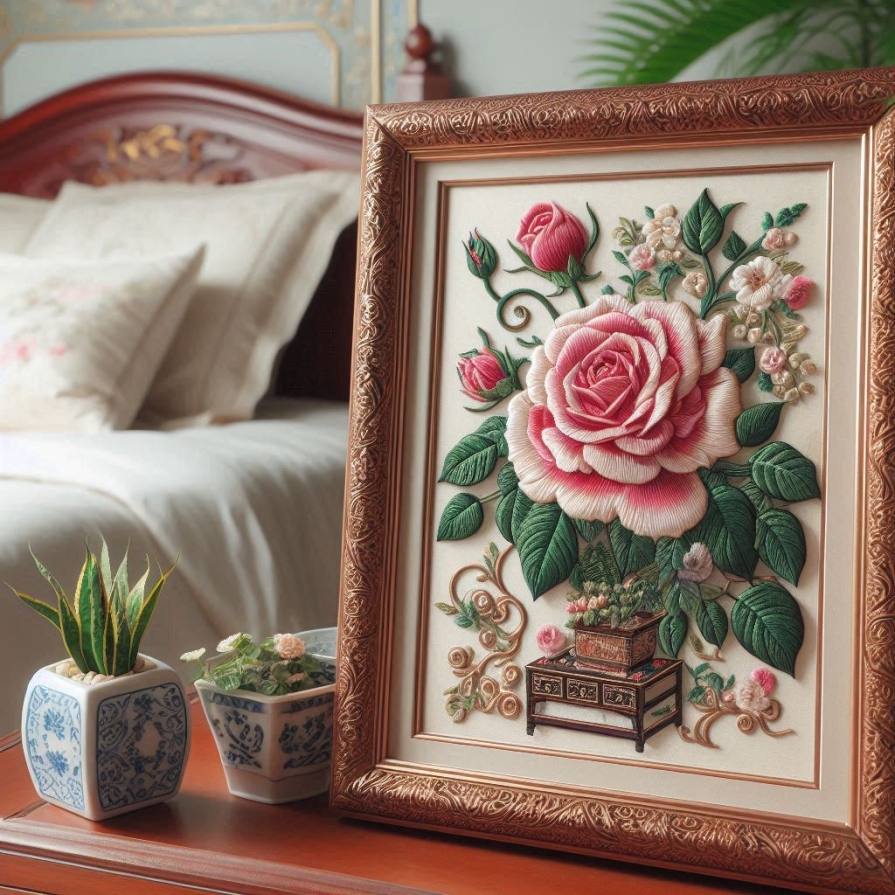
Embroidery's roots can be traced back to ancient civilizations, where it began as a practical and decorative art form. The earliest known examples date back to around 30,000 BC, with the Cro-Magnon era, where fossilized remains of heavily hand-stitched and decorated clothing were discovered. These primitive efforts laid the groundwork for more sophisticated techniques that would follow.
In ancient China, embroidery emerged around 3500 BC, becoming a highly esteemed craft. The Chinese used silk threads to create intricate designs on silk fabric, often depicting mythical creatures, flowers, and scenes from nature. This early embroidery was not only a form of decoration but also a symbol of wealth and status, as only the affluent could afford the luxury of silk garments.
Similarly, in ancient Egypt, embroidery was used to embellish clothing, linens, and ceremonial items. The Egyptians favored motifs like lotus flowers, scarabs, and hieroglyphics, which were stitched using linen threads. The famous tomb of Tutankhamun contained richly embroidered garments, showcasing the Egyptians' skill and artistry in this domain.
The Middle Ages: Embroidery in Europe
The Middle Ages marked a significant period in the evolution of embroidery in Europe. Monastic communities played a crucial role in preserving and advancing the craft. Monks and nuns embroidered religious vestments, altar cloths, and tapestries with exquisite detail, often using gold and silver threads. The Bayeux Tapestry, an 11th-century masterpiece, stands as a testament to the skill and creativity of medieval embroiderers. This 70-meter-long embroidered cloth narrates the events leading up to the Norman conquest of England, showcasing not only historical events but also the technical prowess of the artists.
During this period, embroidery also became a popular pastime among noblewomen. Courtly embroidery, known as "opus anglicanum" or "English work," gained international acclaim for its fine craftsmanship. English embroiderers were renowned for their use of gold and silver threads, pearls, and precious stones, creating luxurious garments and ecclesiastical items.
The Renaissance: A Revival of Art and Technique
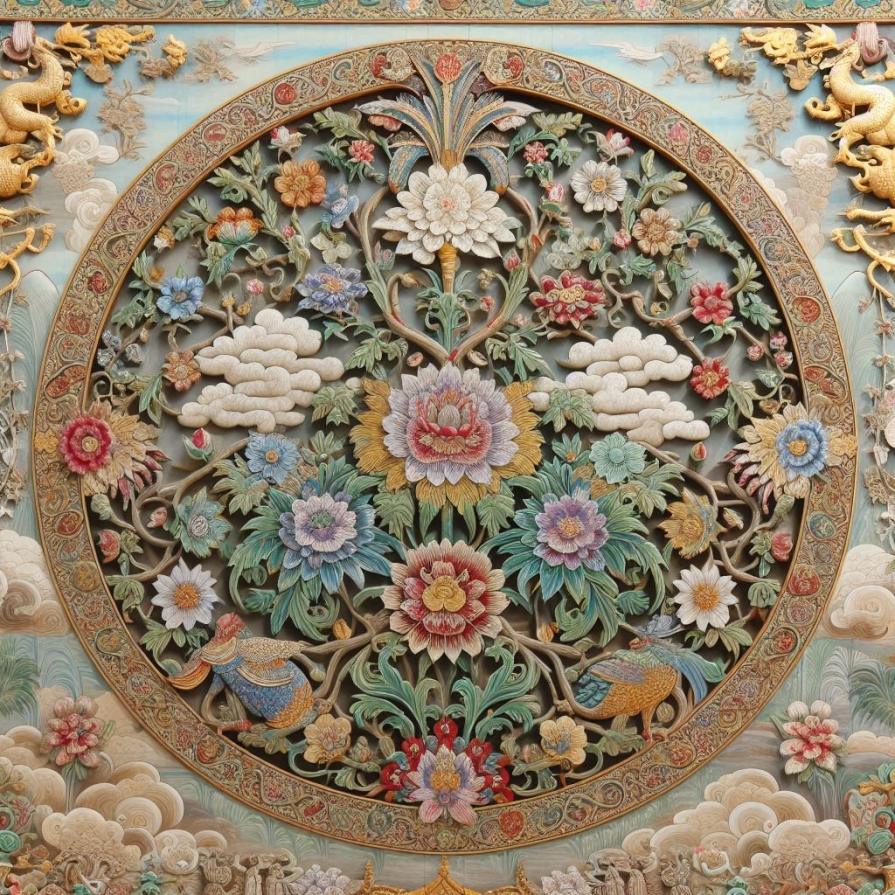
The Renaissance period heralded a revival of art and culture, and embroidery flourished alongside other artistic endeavors. The development of new techniques and the expansion of trade routes brought fresh influences and materials to Europe. The use of silk, metallic threads, and a wider color palette allowed for more intricate and vibrant designs.
Italian Renaissance embroidery was particularly notable for its lavish use of gold and silver threads. Elaborate designs featuring floral motifs, mythological scenes, and intricate patterns adorned clothing, household linens, and church vestments. The famous Medici family were great patrons of the arts, including embroidery, and their collections included some of the finest examples of Renaissance needlework.
In the Elizabethan era, England experienced a golden age of embroidery. Queen Elizabeth I herself was an accomplished embroiderer, and her court set the fashion for highly decorative and symbolic embroidered garments. Blackwork, a technique involving black silk thread on white linen, became especially popular during this time. This monochromatic style featured intricate geometric patterns and floral designs, often used to embellish cuffs, collars, and sleeves.
The Industrial Revolution: Embroidery and Mass Production
The advent of the Industrial Revolution in the 18th and 19th centuries brought significant changes to the world of embroidery. The invention of the sewing machine by Elias Howe in 1846, followed by Isaac Singer's improvements, revolutionized the craft. Machine embroidery made it possible to produce embroidered goods more quickly and affordably, making them accessible to a broader audience.
Despite the rise of machine embroidery, hand embroidery retained its appeal, especially for high-quality and bespoke items. The Arts and Crafts movement of the late 19th century, led by figures like William Morris, emphasized the value of traditional craftsmanship and inspired a renewed interest in hand-embroidered textiles. This movement celebrated the beauty of handmade objects and sought to preserve traditional techniques in the face of industrialization.
The 20th Century: Innovation and Diversity
The 20th century saw further innovations and diversification in the world of embroidery. Advances in technology and materials opened up new possibilities for embroiderers. Synthetic threads, new dyes, and computerized embroidery machines expanded the range of techniques and designs available.
In the early 20th century, the Art Nouveau and Art Deco movements influenced embroidery with their distinctive styles. Art Nouveau embroidery featured flowing, organic forms inspired by nature, while Art Deco embroidery embraced bold geometric patterns and vibrant colors. These styles were often seen in fashion, home décor, and accessories, reflecting the changing tastes of the times.
The mid-20th century brought about a resurgence of interest in traditional embroidery techniques from around the world. As global travel became more accessible, embroiderers began to explore and incorporate diverse cultural influences into their work. This period saw a blending of styles and motifs from different cultures, resulting in unique and eclectic designs.
Contemporary Embroidery: A Modern Renaissance
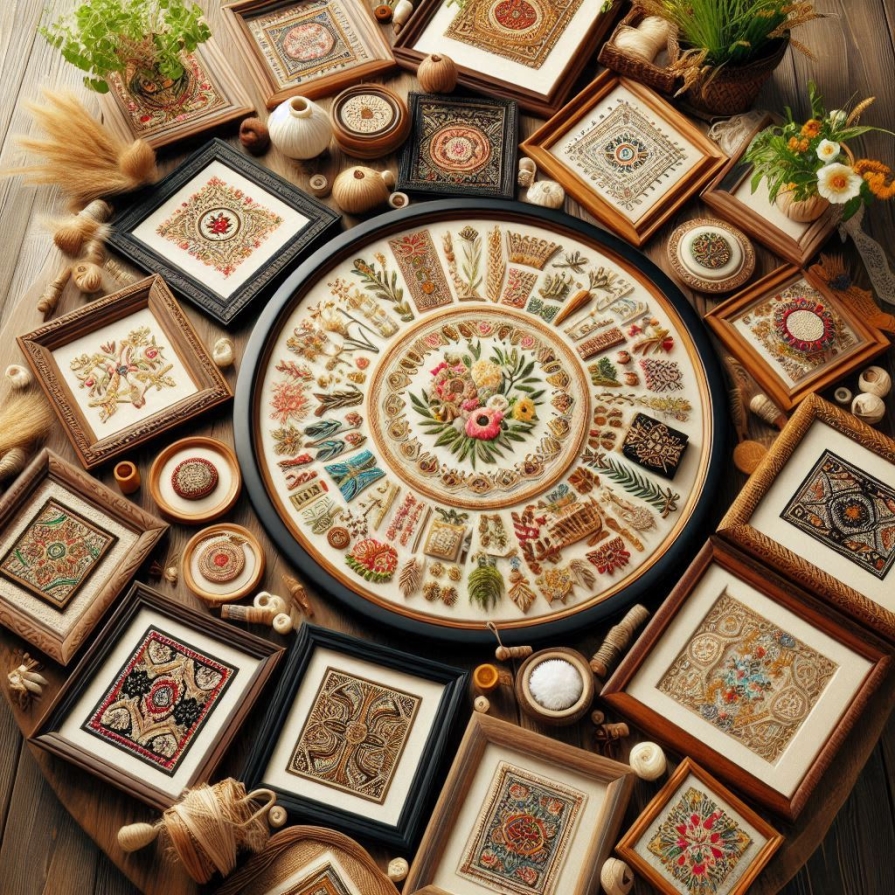
In recent decades, embroidery has experienced a modern renaissance, thanks in part to the rise of the DIY movement and the internet. Social media platforms like Instagram and Pinterest have allowed embroiderers to share their work with a global audience, fostering a sense of community and collaboration among artists. This digital age has democratized embroidery, making it accessible to people of all skill levels and backgrounds.
Contemporary embroidery artists are pushing the boundaries of the craft, experimenting with new materials, techniques, and themes. Some artists use unconventional materials like wire, beads, and found objects to create three-dimensional embroidered sculptures. Others explore themes of identity, politics, and social justice through their work, using embroidery as a medium for self-expression and activism.
The slow fashion movement has also contributed to the resurgence of embroidery. As consumers become more conscious of the environmental and ethical implications of fast fashion, there is a growing appreciation for handmade, sustainable, and unique items. Embroidery fits perfectly into this ethos, offering a way to create personalized, meaningful, and lasting pieces of art.
The Techniques and Styles of Embroidery
Embroidery encompasses a wide range of techniques and styles, each with its own unique characteristics and history. Some of the most popular techniques include cross-stitch, crewelwork, stumpwork, and needlepoint.
Cross-stitch is one of the oldest and most widely practiced forms of embroidery. It involves creating a pattern of X-shaped stitches on a fabric grid, resulting in a pixelated design. This technique has been used for centuries to decorate household items, clothing, and accessories. Today, cross-stitch is enjoying a resurgence in popularity, with modern patterns ranging from traditional motifs to contemporary and subversive designs.
Crewelwork is a form of surface embroidery that uses wool threads to create intricate designs on linen or cotton fabric. This technique dates back to medieval England and was particularly popular during the Jacobean era. Crewelwork often features floral and foliate patterns, animals, and scenes from nature, rendered in a rich and textured style.
Stumpwork, also known as raised embroidery, creates three-dimensional designs by padding the fabric with stuffing or using wire to create raised elements. This technique originated in the 17th century and was used to create elaborate and detailed scenes, often featuring figures, animals, and flowers. Stumpwork fell out of fashion in the 18th century but has experienced a revival in recent years as embroiderers explore its unique possibilities.
Needlepoint, also known as canvas work, involves stitching yarn or thread through a stiff, open-weave canvas to create a dense and durable fabric. This technique has been used for centuries to create tapestries, upholstery, and decorative items. Needlepoint designs can range from simple geometric patterns to intricate pictorial scenes, showcasing the versatility of this technique.
Embroidery Around the World
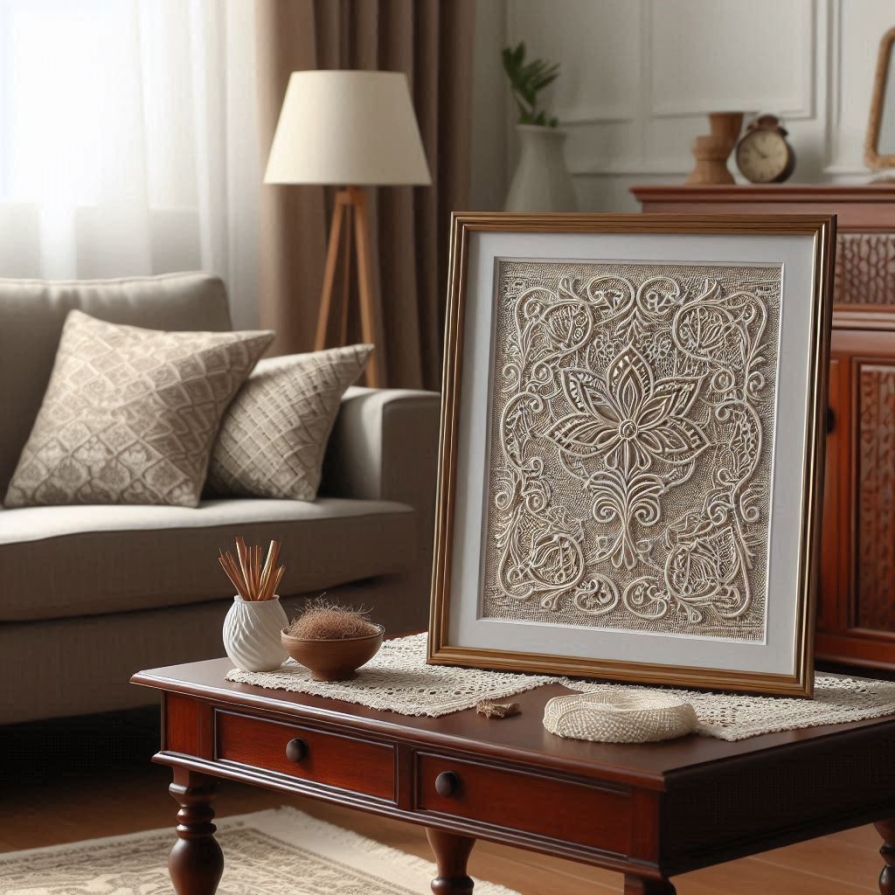
Embroidery is a global art form, with each culture contributing its own unique techniques, styles, and motifs. In India, embroidery has a long and rich history, with regional styles like Kantha, Chikankari, and Zardozi. Kantha embroidery, originating from West Bengal, involves simple running stitches to create intricate patterns, often depicting everyday life, animals, and nature. Chikankari, from Lucknow, uses delicate white thread on pastel fabrics to create intricate floral and paisley designs. Zardozi, a form of goldwork, involves using gold and silver threads to create opulent and intricate designs, often embellished with beads and sequins.
In Japan, embroidery is known as "shishu," and it has been practiced for over a thousand years. Traditional Japanese embroidery techniques, such as Sashiko and Kogin, are characterized by their simplicity and precision. Sashiko involves running stitches in geometric patterns, often used to reinforce and decorate clothing. Kogin, a form of counted thread embroidery, creates intricate designs using simple straight stitches on even-weave fabric.
In Mexico, embroidery is an integral part of the country's cultural heritage. Each region has its own distinctive style, such as the vibrant and colorful Otomi embroidery from the state of Hidalgo. Otomi embroidery features bold, stylized animal and plant motifs, often stitched on white fabric. The intricate and detailed embroidery from the state of Oaxaca, known as "bordado oaxaqueño," showcases the region's rich cultural traditions and artistry.
The Future of Embroidery
As we look to the future, embroidery continues to evolve and adapt to the changing times. The integration of technology, such as computerized embroidery machines and digital design software, has expanded the possibilities for creativity and innovation. However,
the timeless appeal of hand embroidery remains strong, as people seek to connect with traditional crafts and create meaningful, handmade items.
Embroidery also plays a role in contemporary fashion and design. High-end fashion houses like Chanel, Dior, and Valentino frequently incorporate intricate embroidery into their collections, showcasing the skill and artistry of their embroiderers. At the same time, independent designers and artisans are using embroidery to create unique and sustainable fashion pieces, aligning with the growing demand for slow fashion.
Educational institutions and workshops are fostering a new generation of embroiderers, ensuring that this ancient craft continues to thrive. Embroidery guilds and societies around the world offer support, resources, and community for those interested in learning and practicing the art of embroidery.
Embroidery is a vibrant and enduring art form that has transcended time and cultures. From its ancient origins to its modern resurgence, embroidery has captivated and inspired countless individuals. Its rich history and diverse techniques reflect the creativity, skill, and cultural significance of this beloved craft. As we move forward, embroidery will undoubtedly continue to evolve, adapting to new trends and technologies while preserving the timeless beauty of handmade artistry.

